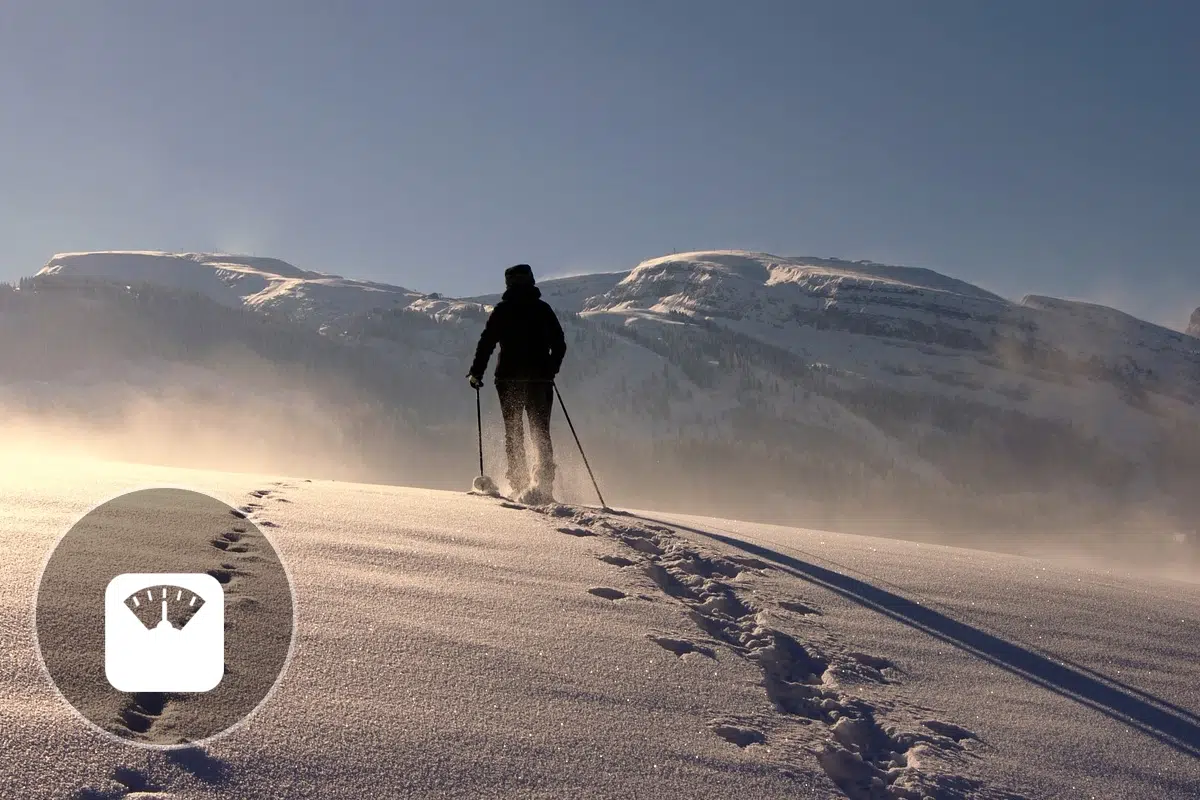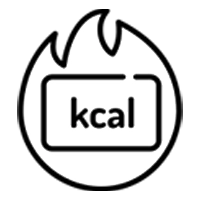Show summary Hide summary
- Snowshoeing for weight loss: How often should we go snowshoeing to lose weight?
- Snowshoeing: How many times per week and for how long should we snowshoe to lose weight?
- Snowshoeing: Which plan should you follow and how often should you do it to lose weight?
- In addition to practicing snowshoeing, it is important to pay attention to your diet!
- Which sports can help you lose weight?
Snowshoeing for weight loss: How often should we go snowshoeing to lose weight?

Everything you need to know about snowshoeing
How often should you go snowshoeing to lose weight fast and see results? Does snowshoeing help you lose weight? How many times per week and for how long should you snowshoe to lose weight and burn fat? The tool below enables you to track the effects of snowshoeing over a month. Simply select the duration of your snowshoeing session—either 30 minutes or 1 hour—and choose a frequency of 1, 2, 3, or 4 times per week to shed those extra kilos!
Explore more REGIVIA tools:
Snowshoeing: How many times per week and for how long should we snowshoe to lose weight?

Find out more about snowshoeing for weight loss!
Regular exercise combined with a healthy diet can help you slim and tone your body, but some sports are more effective than others at helping you lose weight. What about snowshoeing and its calorie burn? How much time per week can snowshoeing help you lose weight and get results? Here are some answers.
Calories burned with snowshoeing!
Snowshoeing is an interesting winter sport that works over 85% of the body’s muscles. The activity of walking more or less, combined with the resistance of the snow and the extreme cold, boosts energy expenditure considerably. While the body needs to maintain a temperature of 37°C, it also needs energy to keep itself going and compensate for the physical effort involved. Snowshoeing generates an overall energy expenditure of 300 to 800 calories for one hour of practice. What’s more, this outdoor discipline encourages escapism, exposure to daylight and contact with nature. All of these factors have an impact on your well-being, reducing stress and snacking. Whatever the case, physical activity combined with a healthy diet remains the key to achieving and/or maintaining your ideal weight.
What is the metabolic equivalent of snowshoeing?
The metabolic equivalent of a physical activity is a statistical unit(MET Metabolic Equivalent of Task) used to express the ratio between the energy expenditure of a physical activity during exercise and the energy expenditure of an individual at rest. Snowshoeing, for example, is a low-intensity activity with a MET value of 8, which means that it burns 8 times more energy than at rest, in the same way as handball and Zumba.
Snowshoeing: Which plan should you follow and how often should you do it to lose weight?
Estimates, calculations and weight loss results from several examples of snowshoeing training plans!
Do you know how much weight you lose by doing 30 minutes, 1 hour or 2 hours of snowshoeing? How often should you train to lose weight and burn fat? The tables below will give you an idea of your weight loss as a function of weight, duration and number of training sessions per week.
Performance, effects and impact “before/after”: List of snowshoeing programmes over 1 month!
Hiking
on snowshoes
Weight loss results for 1 session per week
| Weight | 30 minutes | 1 hour | 2 hours |
|---|---|---|---|
| 40 kg | 0.07 | 0.15 | 0.30 |
| 50 kg | 0.09 | 0.19 | 0.37 |
| 60 kg | 0.11 | 0.22 | 0.45 |
| 70 kg | 0.13 | 0.26 | 0.52 |
| 80 kg | 0.15 | 0.30 | 0.60 |
| 90 kg | 0.17 | 0.34 | 0.67 |
Hiking
with snowshoes
Weight loss results for 2 sessions per week
| Weight | 30 minutes | 1 hour | 2 hours |
|---|---|---|---|
| 40 kg | 0.15 | 0.30 | 0.60 |
| 50 kg | 0.19 | 0.37 | 0.75 |
| 60 kg | 0.22 | 0.45 | 0.90 |
| 70 kg | 0.26 | 0.52 | 1.05 |
| 80 kg | 0.30 | 0.60 | 1.19 |
| 90 kg | 0.34 | 0.67 | 1.34 |
Hiking
with snowshoes
Weight loss results for 3 sessions per week
| Weight | 30 minutes | 1 hour | 2 hours |
|---|---|---|---|
| 40 kg | 0.22 | 0.45 | 0.90 |
| 50 kg | 0.28 | 0.56 | 1.12 |
| 60 kg | 0.34 | 0.67 | 1.34 |
| 70 kg | 0.39 | 0.78 | 1.57 |
| 80 kg | 0.45 | 0.90 | 1.79 |
| 90 kg | 0.50 | 1.01 | 2.02 |
In addition to practicing snowshoeing, it is important to pay attention to your diet!
To maximize the benefits of snowshoeing, it is crucial to adopt a balanced diet. A diet rich in macronutrients, micronutrients, and various other essential nutrients helps maintain an optimal energy balance. The energy balance, which is the difference between calories consumed and calories expended, plays a key role in weight management. If you are wondering “why did I gain weight“, it may be that your energy balance is off. By combining snowshoeing with proper nutrition, you can achieve your health and wellness goals more effectively.
Everything you need to know about snowshoeing
Which sports can help you lose weight?
All sports in detail!



















































